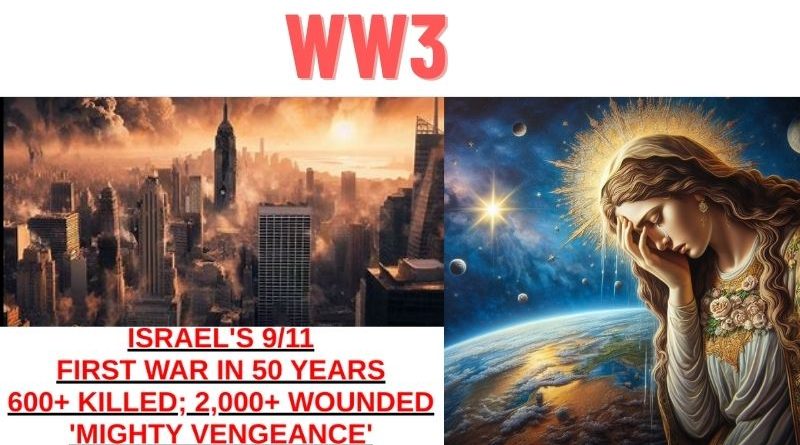Signs: WW 3 – Be Ready for what is coming
The Hamas invasion of Israel could lead to a wider conflict involving Russia, Iran, and potentially other countries in the region.
Israeli soldiers battled Hamas fighters in the streets of southern Israel on Sunday and launched retaliation strikes that leveled buildings in Gaza, while in northern Israel a brief exchange of strikes with Lebanon’s Hezbollah militant group raised fears of a broader conflict.
There was still some fighting underway more than 24 hours after an unprecedented surprise attack from Gaza, in which Hamas militants, backed by a volley of thousands of rockets, broke through Israel’s security barrier and rampaged through nearby communities. At least 600 people have reportedly been killed in Israel — a staggering toll on a scale the country has not experienced in decades — and more than 300 have been killed in Gaza.
Hamas is a Palestinian Sunni-Islamist fundamentalist militant organization and political party that controls the Gaza Strip. It is designated as a terrorist organization by the United States, the European Union, Israel, Japan, Canada, and the United Kingdom.
Russia is a major supporter of Hamas and has provided the group with weapons and financial assistance. Russia has also vetoed several UN Security Council resolutions that condemned Hamas attacks on Israel.

Iran is another major supporter of Hamas and has provided the group with weapons and training. Iran has also threatened to retaliate against Israel if it attacks Hamas.
If the Hamas invasion of Israel escalates, it is possible that Russia and Iran could intervene on Hamas’s behalf. This could lead to a wider conflict involving Israel, Russia, Iran, and potentially other countries in the region.
The following are some of the ways in which the Hamas invasion of Israel could lead to a wider conflict involving Russia, Iran, and potentially other countries in the region:
- Direct military intervention: Russia or Iran could directly intervene on Hamas’s behalf, sending troops or weapons to the Gaza Strip. This could lead to a direct conflict between Israel and Russia or Iran.
- Proxy war: Russia or Iran could support Hamas through a proxy war, providing the group with weapons and training, but not directly intervening in the conflict. This could prolong the conflict and make it more difficult to resolve.
- Regional instability: The Hamas invasion of Israel could destabilize the entire region, leading to other countries in the region taking sides in the conflict. This could lead to a wider regional war.
It is important to note that the above are just some of the ways in which the Hamas invasion of Israel could lead to a wider conflict. It is also possible that the conflict could be resolved peacefully, without escalating into a wider war. However, it is important to be aware of the potential risks of the situation and to take steps to mitigate them.
Here are some steps that can be taken to mitigate the risk of the Hamas invasion of Israel leading to a wider conflict:
- Diplomacy: The international community should engage in diplomacy to try to resolve the conflict peacefully. This could involve mediation, negotiation, or other forms of diplomacy.
- Deterrence: The international community should also send a strong message to Russia and Iran that any military intervention on Hamas’s behalf will not be tolerated. This could involve sanctions, military threats, or other forms of deterrence.
- Preparedness: The international community should also be prepared for the possibility of a wider conflict. This could involve preparing militarily, economically, and diplomatically.
The Hamas invasion of Israel is a serious threat to peace and stability in the region. It is important for the international community to take steps to mitigate the risk of the conflict leading to a wider war.





